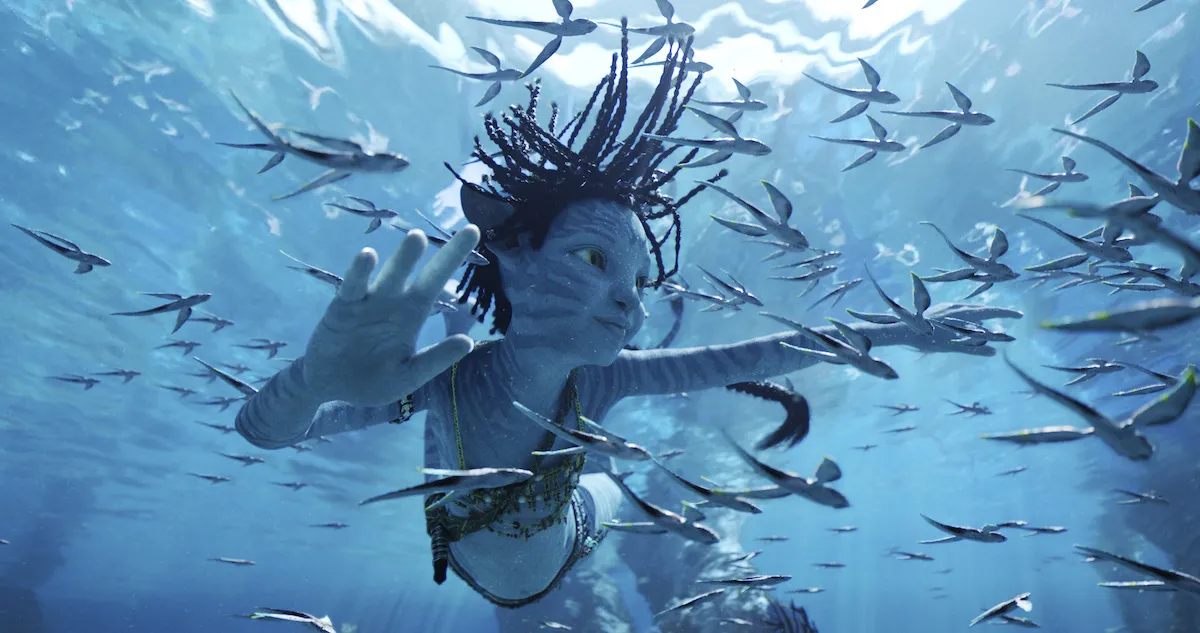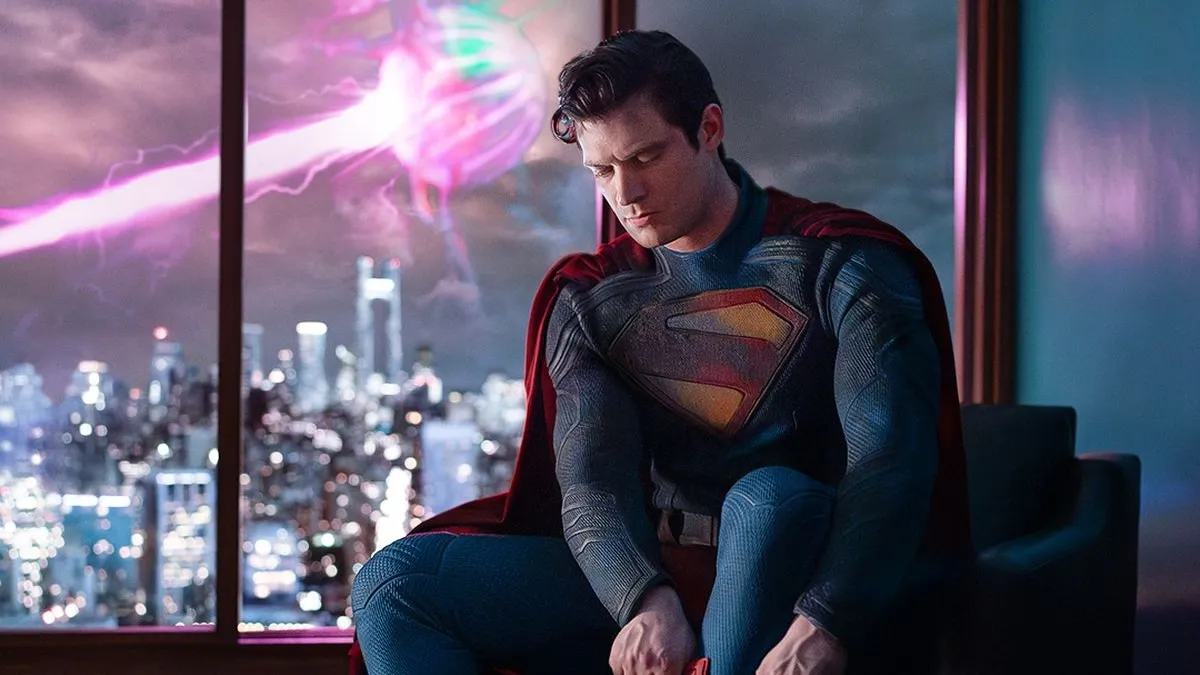It all started with online debates about which of the effects visible in the official trailer for Avatar 2, a.k.a. The Way of Water, were CGI and which were practical effects. Practical effects can be anything physical, from the animatronics used in the original Jurassic Park to the forced perspective that made Gandalf appear to tower over the hobbits in the Lord of the Rings trilogy. Computer-generated imagery permeates almost every form of visual media, but many audience members still appreciate physical props that have weight for performers to react to and that reflect or refract light in ways software can sometimes only approximate.
The discourse ensued until a recent story by 1 News in New Zealand revealed that the close-up of a Na’vi hand holding the reins of a tulkun harness was created practically.
Soon after the discourse dissipated, Logan Preshaw a visual development artist and art director based in New Zealand, posted a thread of tweets about his experience working for Wētā Workshop. Wētā is special effects and prop company based in Miramar, a suburb of Wellington in New Zealand, who have been producing effects for television and film for more than 30 years. Of his experience working on the pre-production of Avatar 2, Preshaw tweeted:
“I worked on Avatar 2. I’m proud of that. I am not proud of how little Weta Workshop pays its artists. As a concept artist I was paid the current minimum wage. A pay cut of $10 [per hour NZD] from when I was a lead on animated cartoon shows. Many of the practical artists were paid similarly.”
His thread continues, making direct reference to the discourse around the prop seen in the trailer:
“If you have the money for this prop, you have the money to pay your artists adequately. Weta Workshop is a world-renowned name and Avatar 2 is a multi-million $$$ film. Many of the artists were earning a little over the tour shop staff’s pay. Well below industry standard.”
“I worked 10 hours a day for $21 NZD/h, which comes to just over $13 USD. 1 hour was deducted for lunch. When I asked for more pay ~8 months in, quoting my previous job’s pay and experience, it was raised to $23. 3 months later I left.”
“Workshop is not a small-time studio, it’s a world-renowned company that regularly receives assistance from the NZ government to keep blockbuster production within its shores. In my time there they had major contracts for Mulan, MIB4, World Expo 2020, the Avatar sequels and more.”
“Workshop’s had many red flags over the years and chosen to do very little to improve. This is reflected in both my experience and the experiences of artists I know from there. If you’re in Aus or NZ, seek other opportunities. The prestige of their name is not worth it.”
It’s important to note that Preshaw is not calling out the film’s distributor 20th Century Studios or Avatar writer/director James Cameron himself, but specifically Wētā Workshop. Even still, Preshaw’s transparency about his rate of pay is an opportunity to take a closer look at the wage disparity in the global television and film industry.

In 2009, Avatar redefined the word “blockbuster” when it took in USD $785,221,649 domestically and USD $2,125,062,453 internationally, bringing its worldwide receipts to USD $2,910,284,102. That’s about $90 million shy of three. Billion. U.S. Dollars.
Like the Star Wars trilogies that preceded it, Avatar pushed the boundaries of what was possible in filmmaking, especially in the way computer-generated imagery is integrated with live action. The results were generally stunning, and Avatar won Academy Awards for Best Art Direction, Best Cinematography, and Best Visual Effects. Wētā has won five other Academy Awards for Best Visual Effects in addition to accolades for their work on films like District 9 and Blade Runner 2049.
Wētā is a well respected, privately owned visual effects company. For a sense of the scale of the wage disparity between this film’s quarter-billion-dollar budget and the amount paid to a concept artist working on this sequel to the highest-grossing film of all time, it’s important to understand exactly what “minimum wage” means.
Minimum wage in the U.S. is a mere $7.25 per hour (that’s NZD $11.37). Five states have never adopted a minimum wage: Alabama, Louisiana, Mississippi, South Carolina, and Tennessee. Georgia and Wyoming have a minimum wage that’s actually less than $7.25 per hour. Although, in all seven of these states, the federal minimum wage of $7.25 per hour still applies, that rate of pay is unsustainably low for many workers.
Minimum wage in New Zealand is higher, at NZD $21.20 (USD $13.61). But no matter where a television or film production is based, “minimum” still means the minimum legally allowable by law.
At the other extreme, Cameron told GQ that in order to be profitable, Avatar: The Way of Water will “have to be the third or fourth highest-grossing film in history. That’s your threshold. That’s your break even.” That means it will have to displace Cameron’s own Titanic or Star Wars Episode VII — The Force Awakens to earn back what it cost to make. Avatar: The Way of Water is projected to collect at least $150 million and as much as $175 million in its first weekend of release, despite the increase of COVID-19 cases reported in the U.S.
Time will tell if Avatar: The Way of Water will actually surpass the volcanic success of its predecessor. But regardless of its ultimate commercial gains or critical response, creative professionals like Preshaw who help make special effects-driven feature films possible deserve better compensation.
(featured image: Nickelodeon, main image: Disney)









Published: Dec 9, 2022 05:40 pm